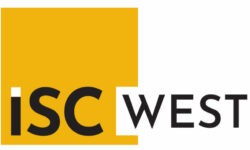Investors Find Safety In Security Stocks

Looking Toward Trends in 2008, There Is Good Cause to Be Bullish
With 2007 in the rearview mirror, what does Lehman Brothers see as the specific investment trends and related venture areas for the security industry in 2008?
Video — Video will remain a core driver of security systems in 2008. The case for video on the network or in a hybrid design will continue to attract private and public investment.
FLIR is looked to as a favorite, long-term investment, with only high valuation keeping Lehman Brothers from projecting the stock could outperform the unweighted expected total return of the sector.
Axis Communications AB, publicly traded on the Stockholm Exchange as the leading network video camera producer, also carries a very high valuation and additionally deserves serious consideration by investors for the long term.
IT — The IT IQ of the security industry is on the rise, which is creating issues in market, storage and employee hiring/education strategies. The increasing demands by the first generation of corporate chief security officers is causing a major headache in the go-to-market channel. The old legacy go-to-market strategy of selling product through thousands of small security dealers is giving way to more sophisticated systems integrators that have both physical and IT knowledge.
Now we are seeing companies like Stanley Works’ Convergent Security Solutions (the combination of HSM Electronic Protection Services and legacy systems integrators) and Securitas Systems (a second spin-off from Securitas) become more IT savvy by hiring and educating their employee bases and generating what should be more than 30 percent recurring monthly revenue (RMR) in 2008. And there are other sma
ller, private security integrators that have built businesses competitive with other IT integrators.
Stanley Works’ acquisition of HSM should eventually increase
the base of investors in the company who may now regard it more than simply a general industrial play. Schneider Electric’s acquisition of Clovis, Calif.-based Pelco, a leading manufacturer of video security systems, also moves that company’s security installation and integration business up to 20 percent of revenues.
Ultimately, the pure play investors must take a look at is Securitas Systems. Although the company continues working to boost its IT acumen, it has made tremendous strides and created a very profitable RMR model in Europe. Securitas Systems’ challenge is to execute that same model and success in the United Kingdom and the U.S.
Interoperability – There are many large, slow-to-develop government identification projects in the Americas, Europe, Middle East and Asia that are creating the need for interoperability and open architecture standards in order to be successful.
This has not gone unnoticed by the major players in the security industry. We can all wonder when TWIC, US-VISIT, Real ID, HSPD-12, SBI, Registered Traveler, and a host of other large identification and security programs are going to reach stages of implementation that finally satisfy Congress, pundits, and those public companies and their investors waiting to sell to the leading systems integrators. The initial phases of TWIC and the “PassCard” portion of the Western hemisphere travel initiatives actually have been awarded. What cannot be disputed is the development of ID programs around the world, some in countries where privacy is not the main debate.
Lehman Brothers continues to recommend Stamford, Conn.-based L-1 Identity Solutions as the leading ID and biometrics company. There are so many small and midsized ID contracts being awarded and/or bid around the world that L-1 does not need the high-profile U.S. mega-contracts to continue growing its organic revenues. Furthermore, L-1 has increased its footprint in access control markets such as transportation and health care with the recent acquisition of Bioscrypt Inc. of Ontario, Canada.
Monitoring – Financial report users and analysts following the alarm monitoring industry are finally learning to focus value on the steady state cash flow (the current value of a company using future cash flows adjusted for time value) of the RMR base and on attrition.
Raw growth, RMR (which can be unprofitable), EBITDA (earnings before interest, taxes, depreciation and amortization), and regular earnings per share, have always been key drivers for the public market – but not for those inside the industry who do the consulting and make the deals. At least in the U.S. we are seeing some real sophistication around the values being created by quality RMR based on attractive companies like Brink’s and Securitas Direct in the residential monitoring business.
China – The so-called rapidly developing “BRIC” countries (Brazil, Russia, India and China) are drawing a lot of investor attention. This is especially true in China where revenue in its security market is already in the billions, compared to hundreds of millions in other BRIC countries.
If you enjoyed this article and want to receive more valuable industry content like this, click here to sign up for our FREE digital newsletters!

Security Is Our Business, Too
For professionals who recommend, buy and install all types of electronic security equipment, a free subscription to Commercial Integrator + Security Sales & Integration is like having a consultant on call. You’ll find an ideal balance of technology and business coverage, with installation tips and techniques for products and updates on how to add to your bottom line.
A FREE subscription to the top resource for security and integration industry will prove to be invaluable.













